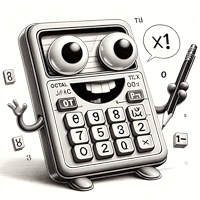Octal Multiplication

This tool helps you multiply octal numbers, including fractional and negative values and displays the result in octal and decimal formats.
The octal number system, also known as base-8, uses digits from 0 to 7. Each digit in an octal number represents a power of 8, making it a compact way to represent binary values and commonly used in computing.
Octal Multiplication Calculator
Calculator
- enter your first octal number in the "First Octal" field. You can include fractions (e.g., 0.44) and negative values (e.g., -12)
- enter your second octal number
Results
- the product from the two above numbers in an octal format
- the product in decimal format
Example Multiplication
First Octal: 0.45 (base 8) Second Octal: 1.3 (base 8)
Convert Octal to Decimal:
First Octal (0.45): Integer part: 0 (base 8) = 0 (base 10) Fractional part: 4/8 + 5/64 = 0.5 + 0.078125 = 0.578125 (base 10) Total: 0 + 0.578125 = 0.578125 (base 10) Second Octal (1.3): Integer part: 1 (base 8) = 1 (base 10) Fractional part: 3/8 = 0.375 (base 10) Total: 1 + 0.375 = 1.375 (base 10)
Multiply the Decimal Values:
0.578125 (base 10) * 1.375 (base 10) = 0.794921875 (base 10)
Convert the Decimal Result Back to Octal:
Integer part: 0 (base 10) = 0 (base 8) Fractional part: 0.794921875 * 8 = 6.359375 -> Octal digit: 6 0.359375 * 8 = 2.875 -> Octal digit: 2 0.875 * 8 = 7.0 -> Octal digit: 7 Total: 0.627 (base 8) The product of 0.45 (base 8) and 1.3 (base 8) is 0.627 (base 8)
Octal Result: 0.627 (base 8) Decimal Result: 0.794921875 (base 10)